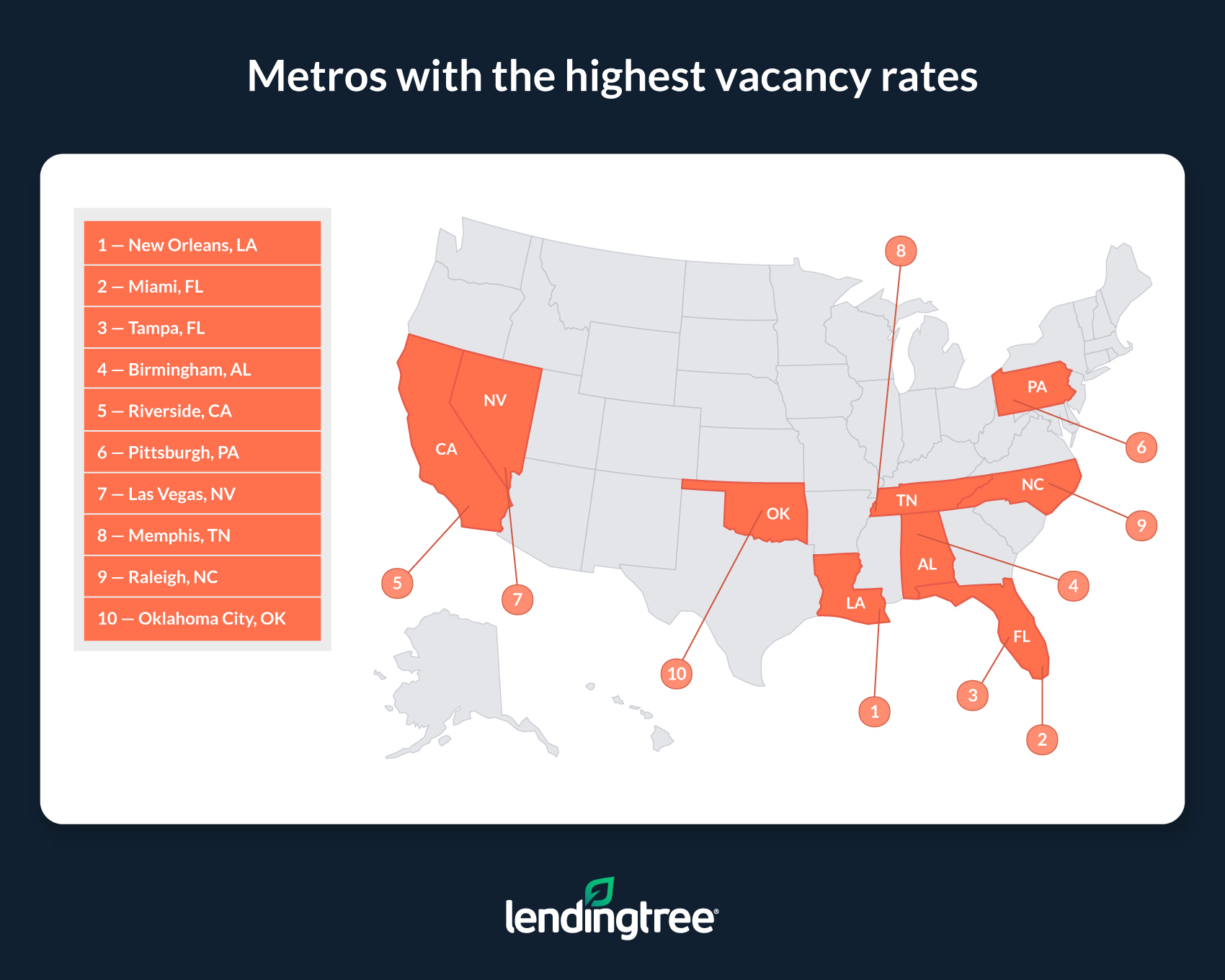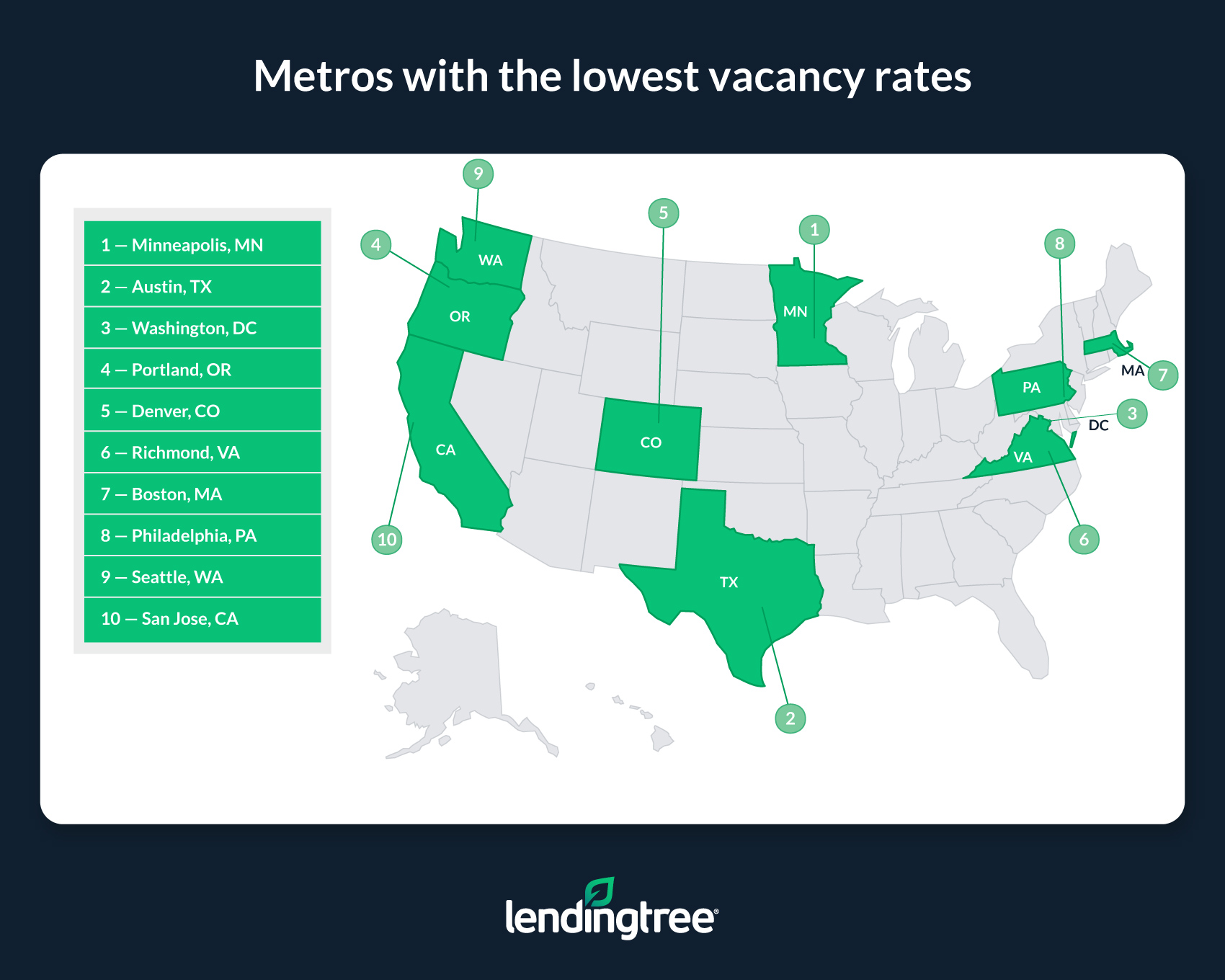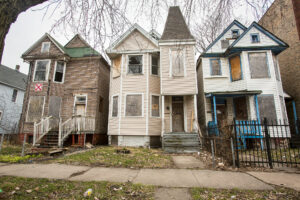A new LendingTree study [1] revealed that a lack of available housing inventory has helped keep housing costs high throughout many of the nation’s biggest cities, as nearly 5.5 million homes sit vacant across the nation’s largest metro areas.
Vacant homes can be—and usually are—unoccupied for many reasons beyond being uninhabitable. For example, a house can be vacant because it’s still on the market to be sold or rented or because it’s a vacation home not being used.
LendingTree analyzed the latest U.S. Census Bureau American Community Survey [2] data to rank the nation’s 50 largest metros by their shares of unoccupied homes.
While vacancy rates can vary significantly, tens of thousands of housing units sit vacant in each of the metros featured in LendingTree's study.
- An estimated 5,475,687 housing units are vacant across the nation’s 50 largest metros. The average vacancy rate across these 50 metros is 7.22%.
- New Orleans, Miami and Tampa, Fla., have the highest vacancy rates. The vacancy rates in these metros are 13.88%, 12.65% and 12.15%, respectively. In these three metros, more than 600,000 housing units are vacant.
- Vacancy rates are lowest in Minneapolis, Austin, Texas, and Washington, D.C. At 4.51%, 4.57%, and 4.98% Minneapolis, Austin and D.C. are the only metros in our study with vacancy rates below 5.00%.
- Housing units commonly sit empty because they’re waiting to be rented, only used for part of the year or undergoing repairs and/or renovations. On average, 26.61% of the vacant housing units across the nation’s 50 largest metros are empty because they’re for rent. An average of 17.04% are vacant because they’re only used part time, while an average of 7.98% are empty because they’re being repaired or renovated. Just because a unit is unused doesn’t mean it’s unwanted or it’ll remain empty for long.

Top 10 Metros With the Highest Vacancy Rates:
- New Orleans
- Miami
- Tampa, FL
- Birmingham, AL
- Riverside, CA
- Pittsburgh
- Las Vegas
- Memphis, TN
- Raleigh, NC
- Oklahoma City
Top 10 Metros With the Lowest Vacancy Rates:
- Minneapolis
- Austin, TX
- Washington, DC
- Portland, OR
- Denver
- Richmond, VA
- Boston
- Philadelphia
- Seattle
- San Jose, CA

Vacancy Rates and High Home Prices
According to LendingTree experts, in a simplified version of the housing market, vacancy rates should have a strong inverse relationship to home and rent prices.
For example, high vacancy rates should signify a lack of demand from homebuyers and or renters, resulting in a larger supply of homes on the market and lower prices. The inverse should also be true where a low vacancy rate signifies strong demand, less supply and higher prices.
With such high housing prices, it may seem strange to some that so many homes in the U.S.'s largest metros are sitting empty.
To read the full report, including more data, charts, and methodology, click here [1].
